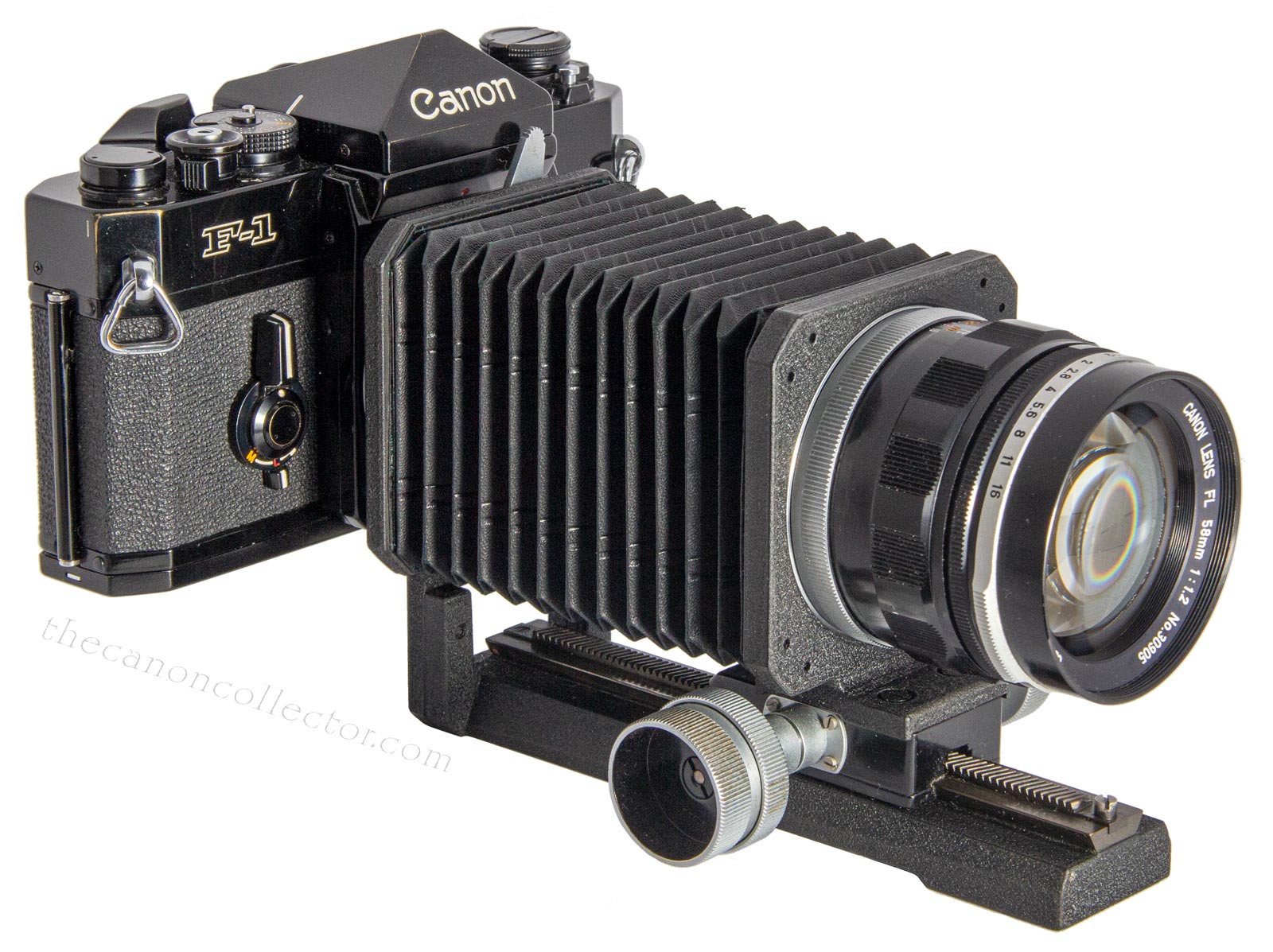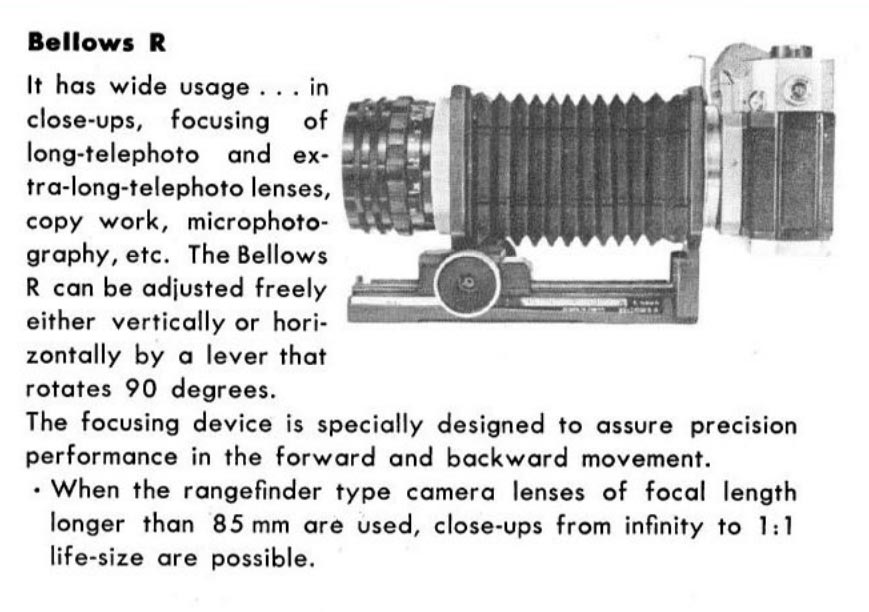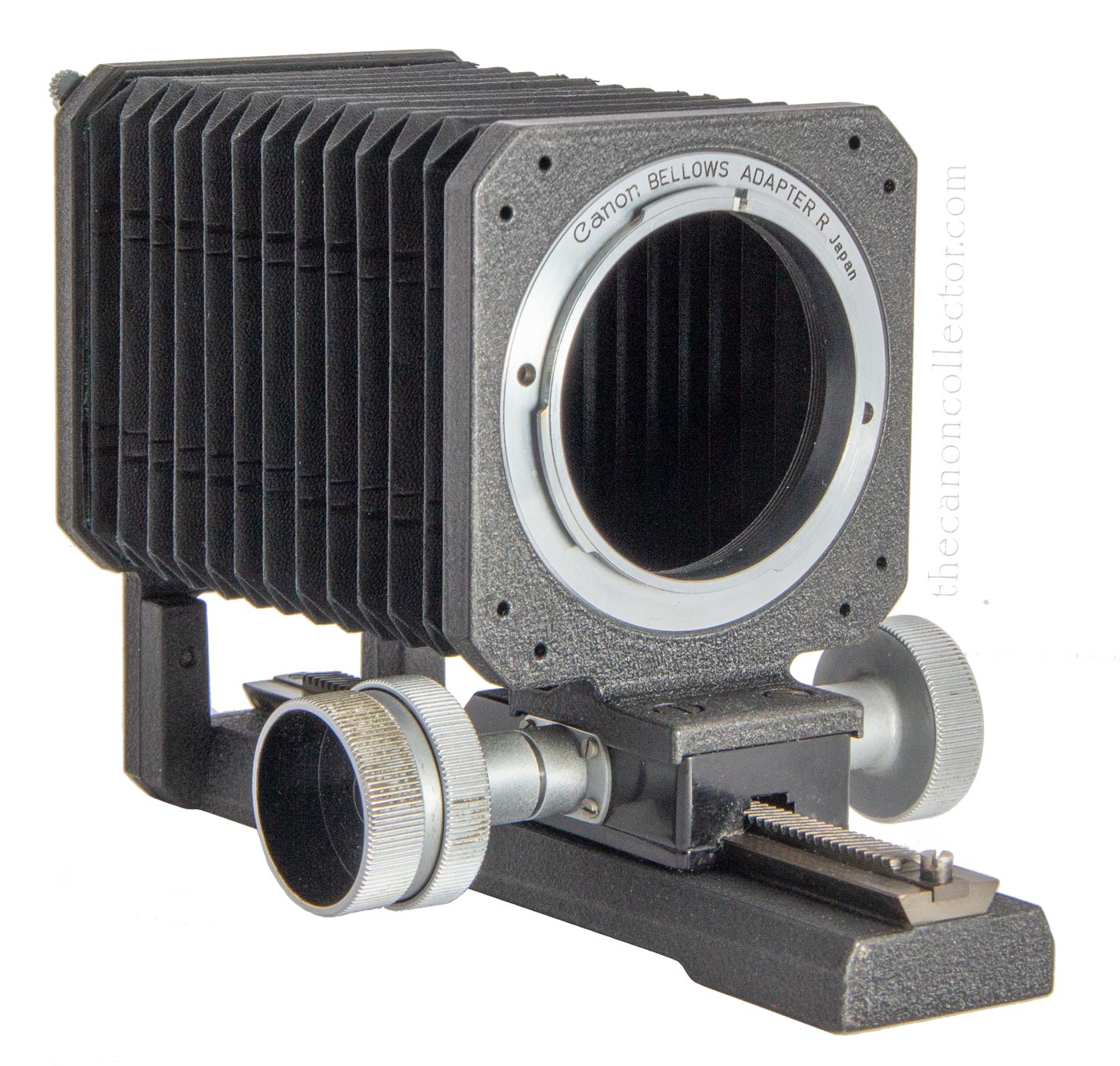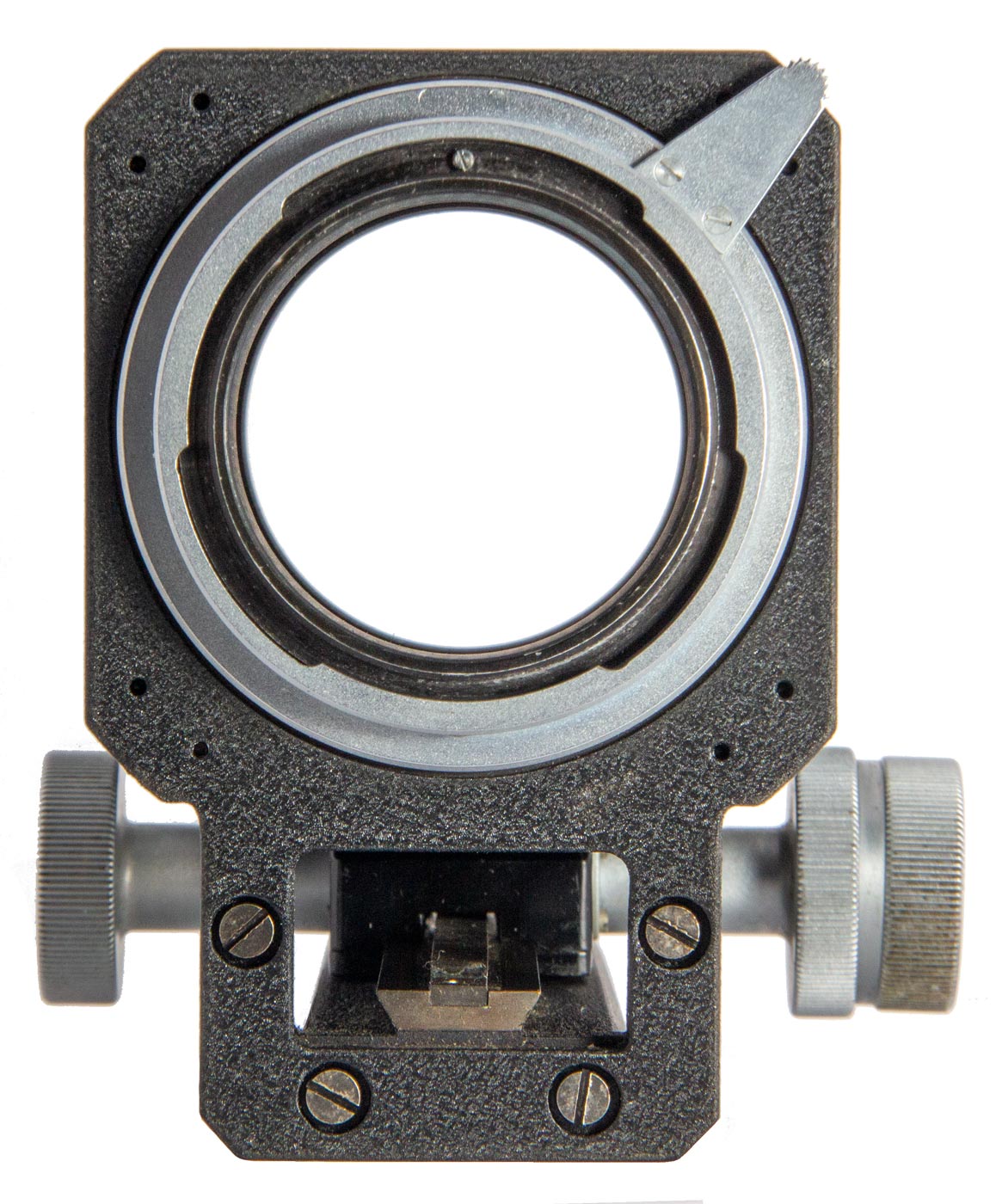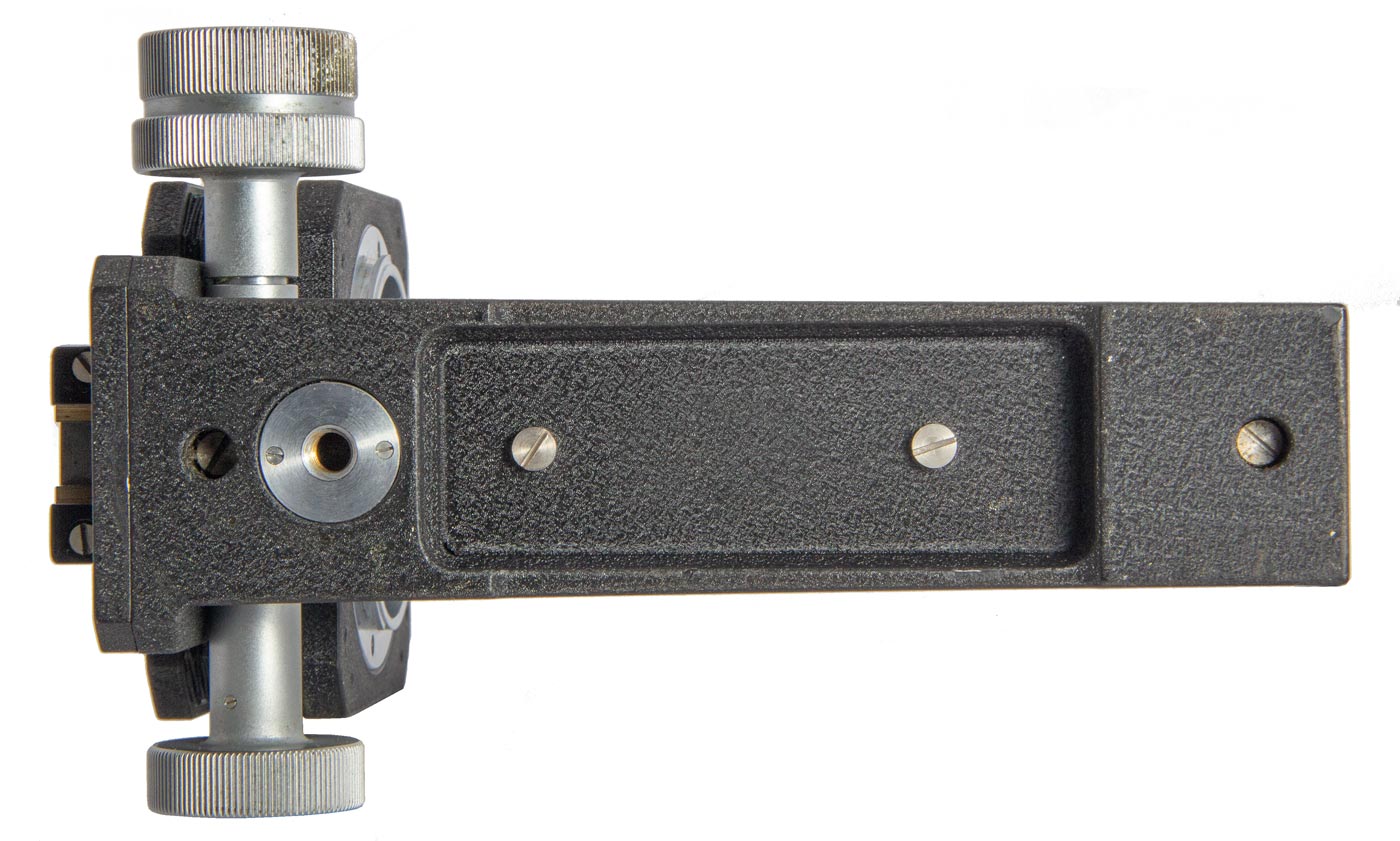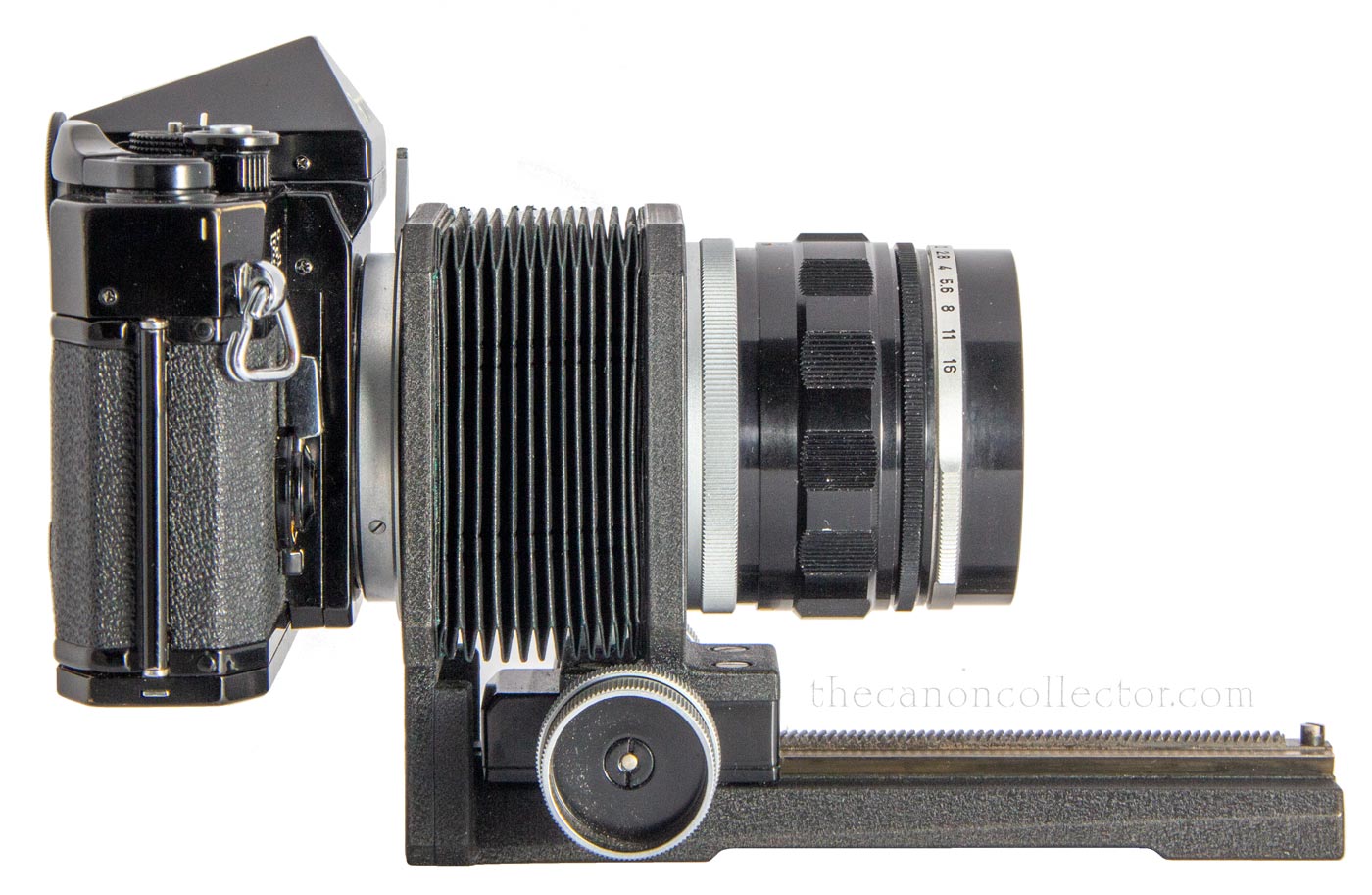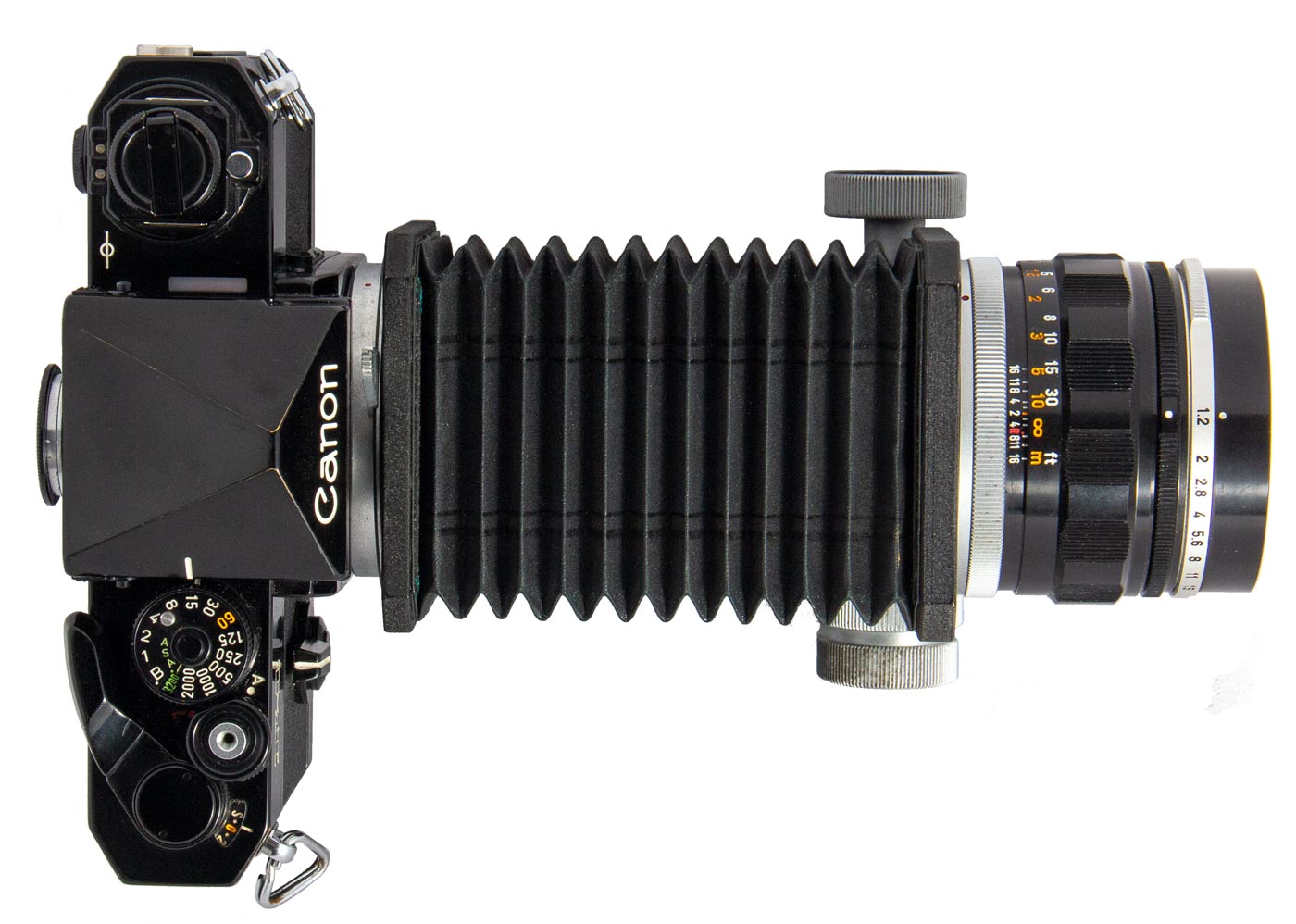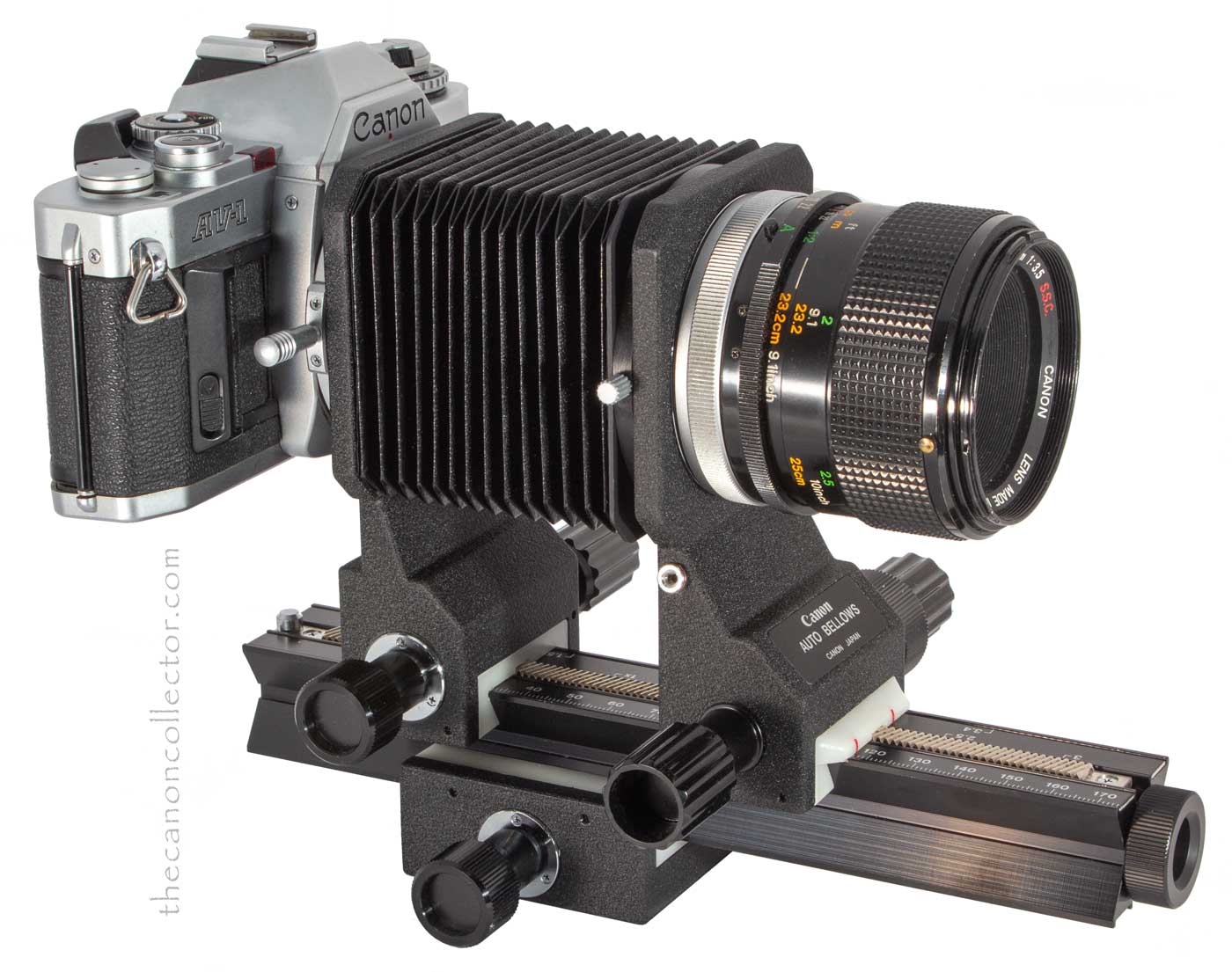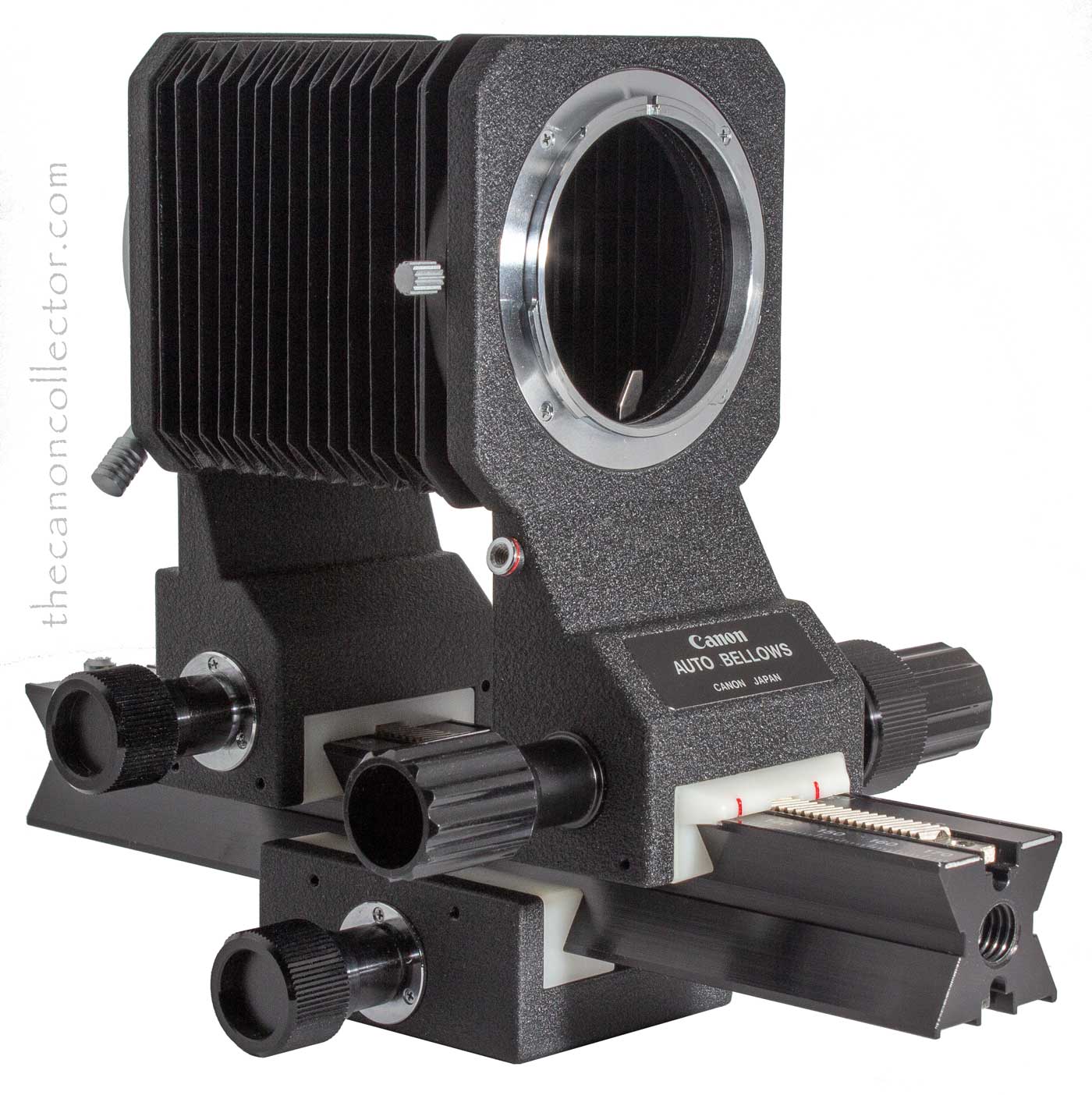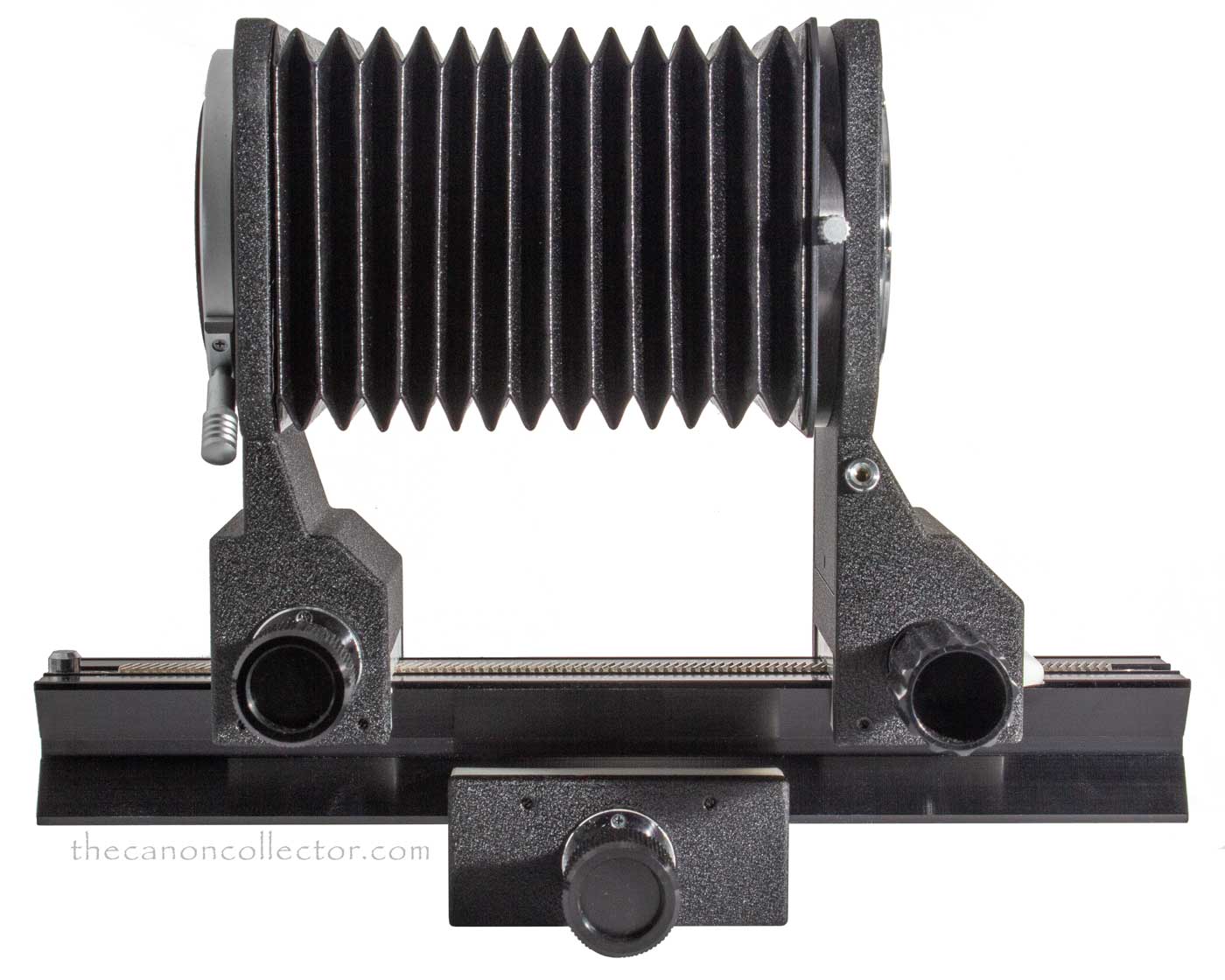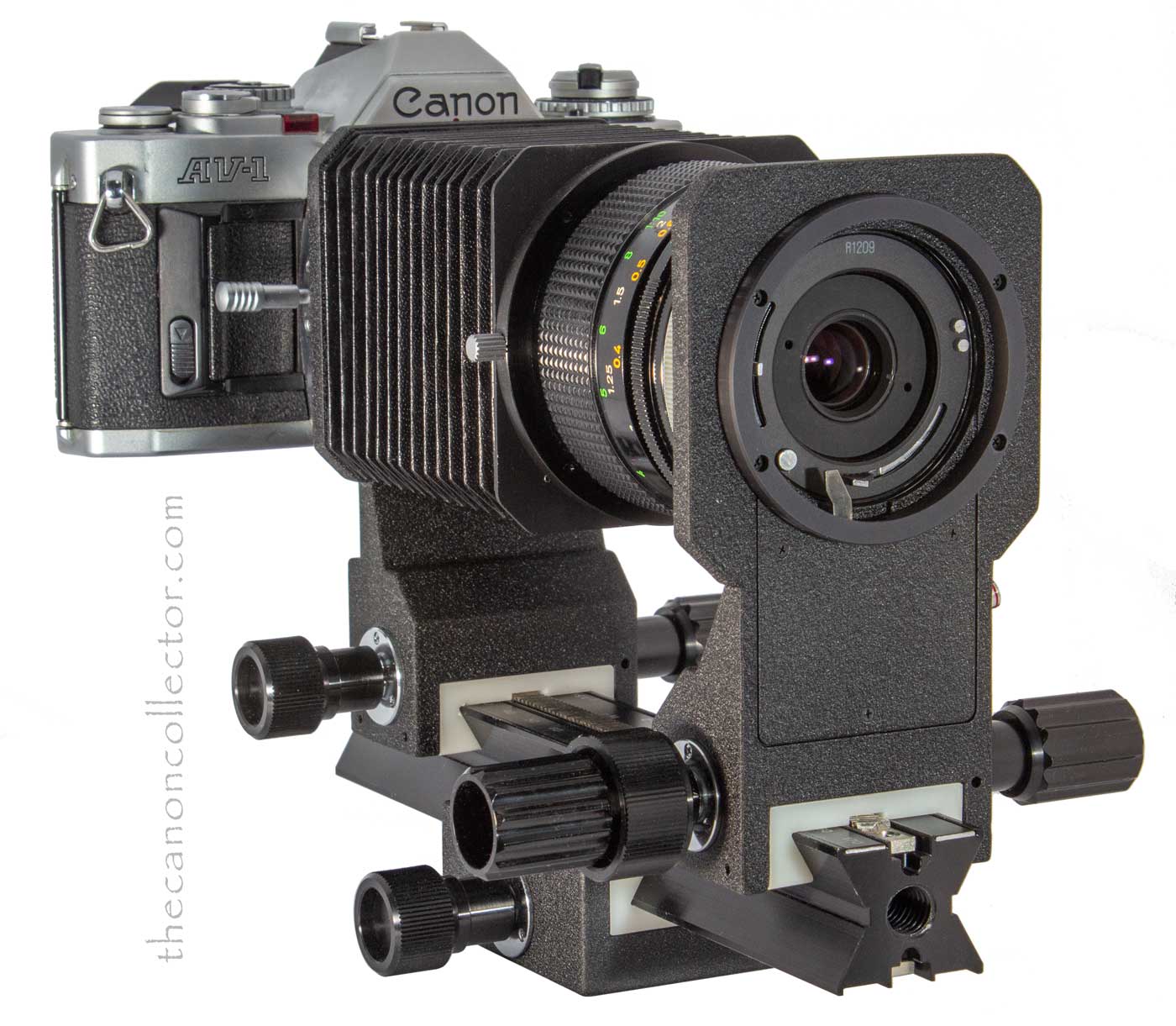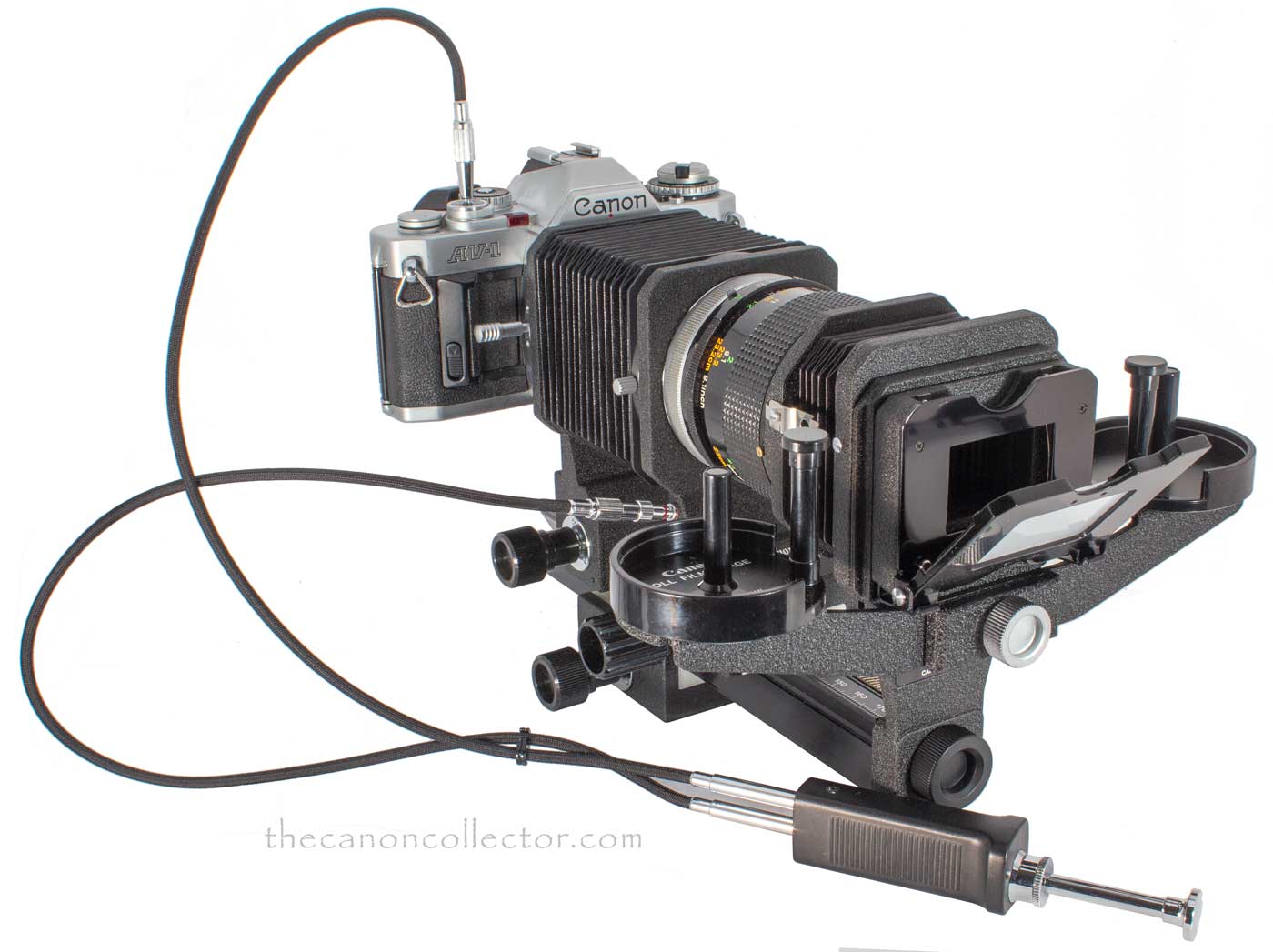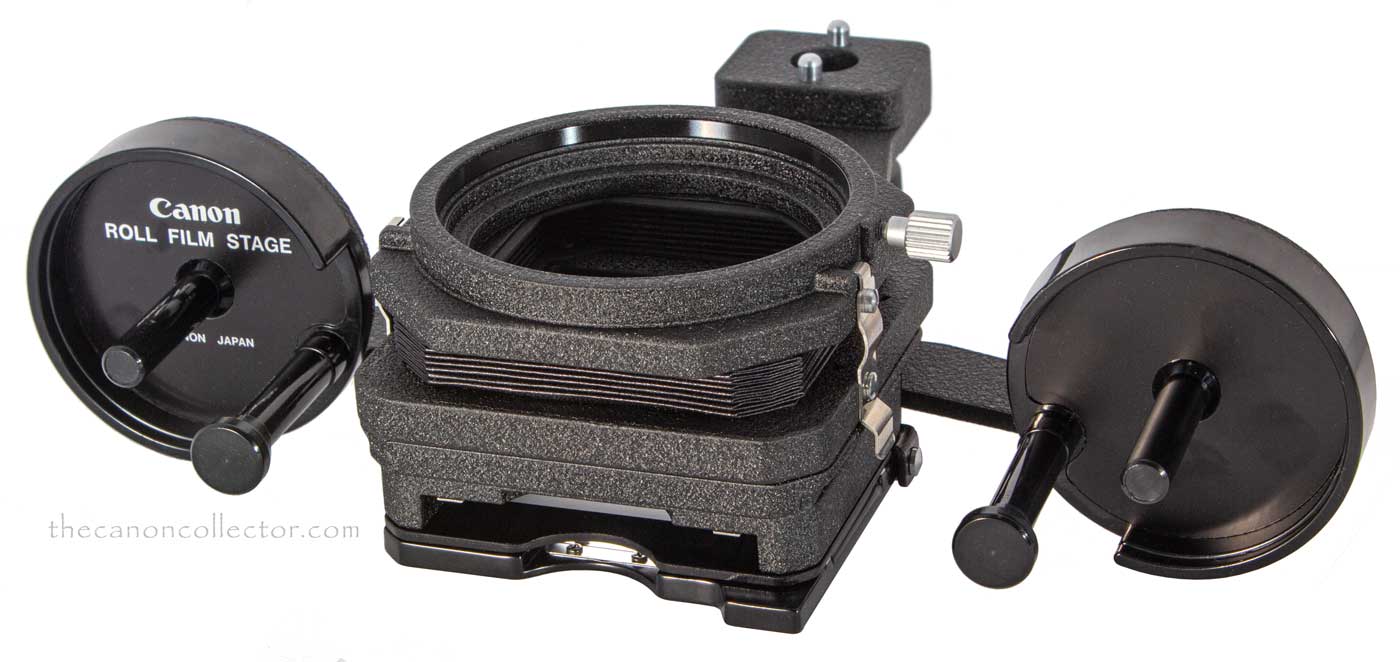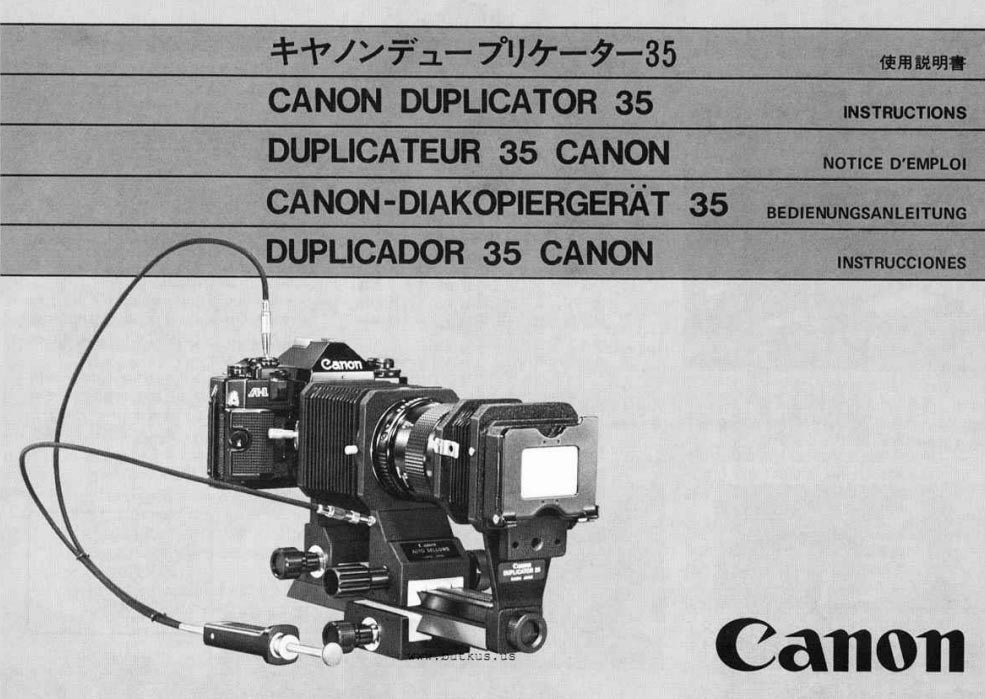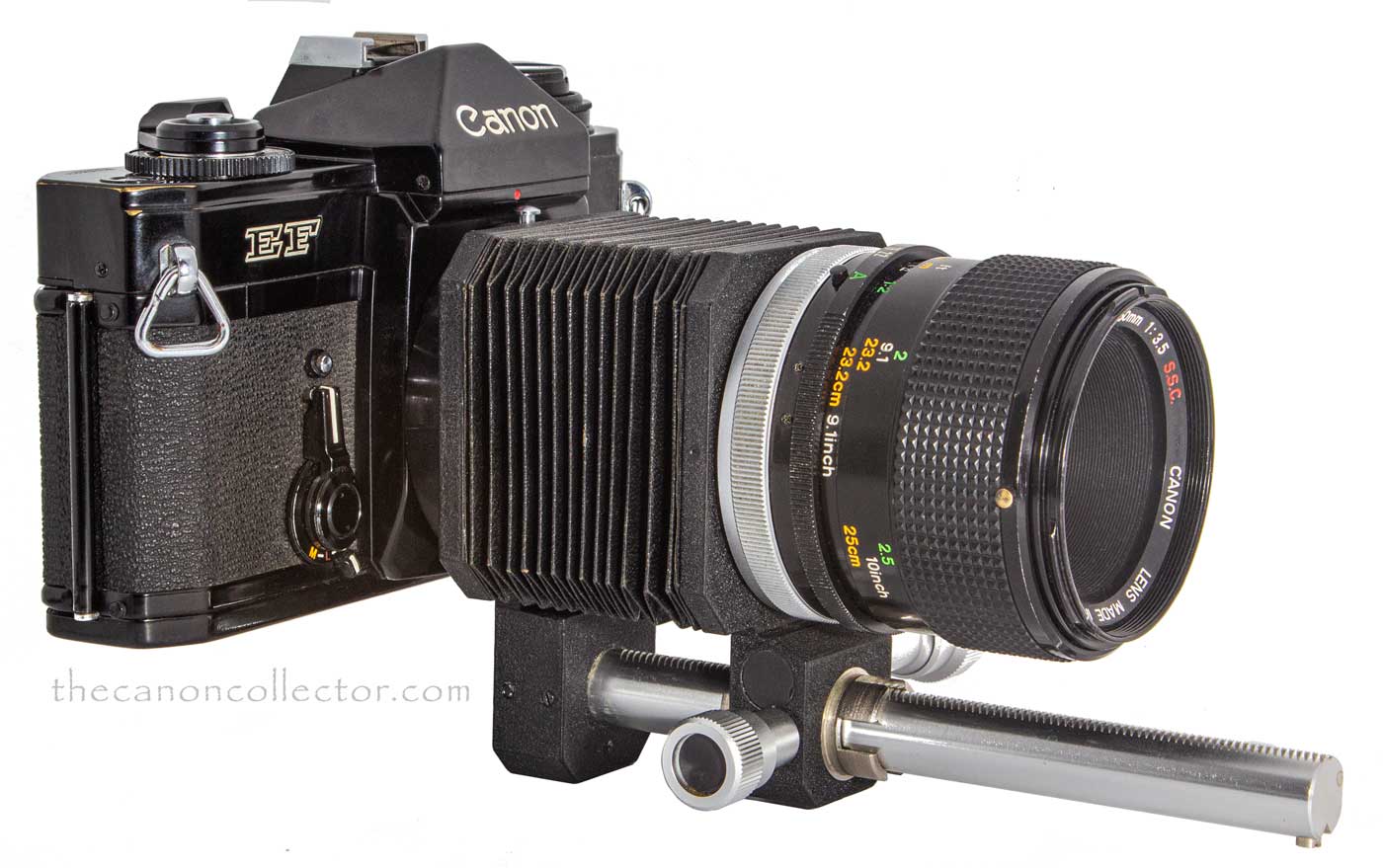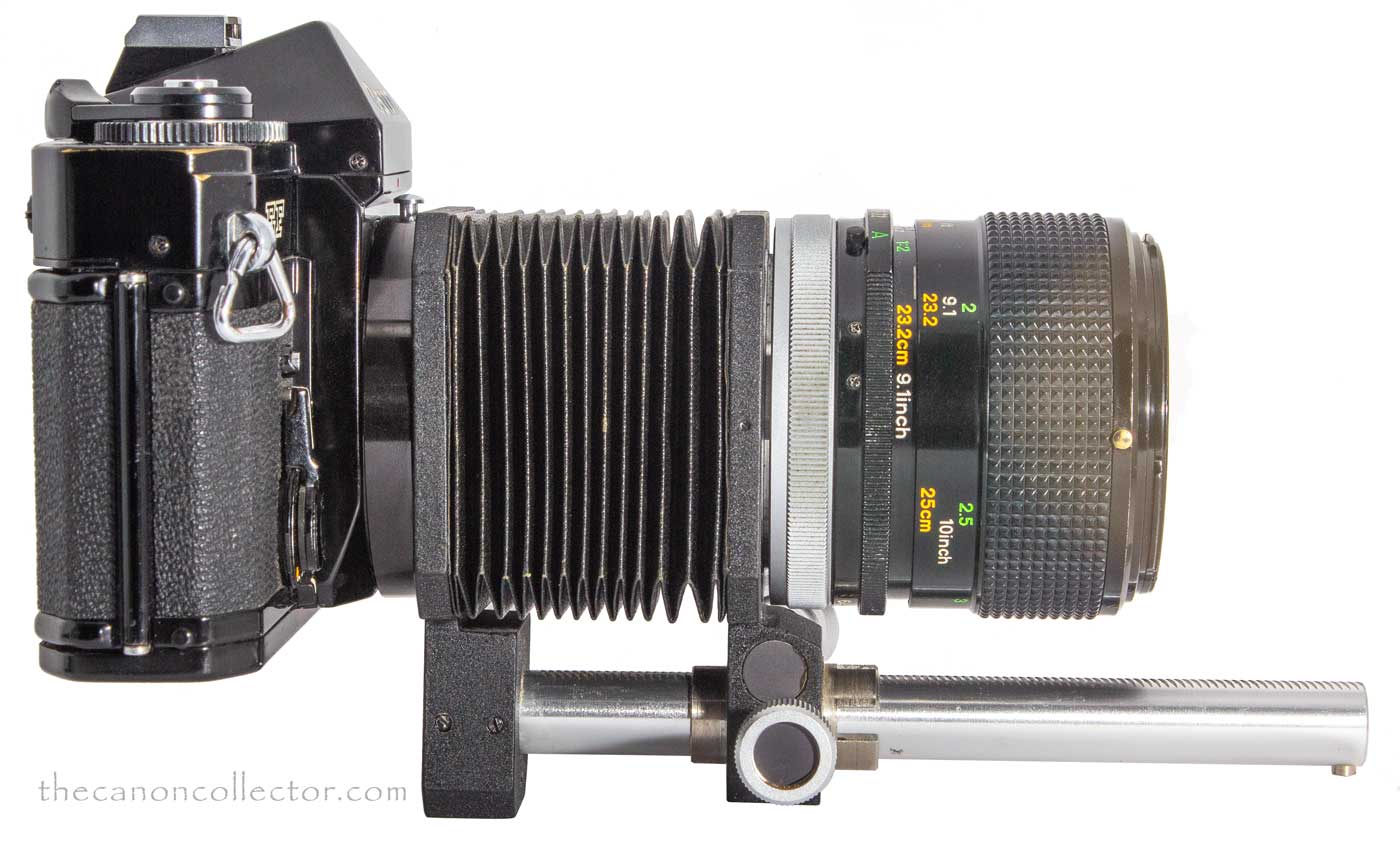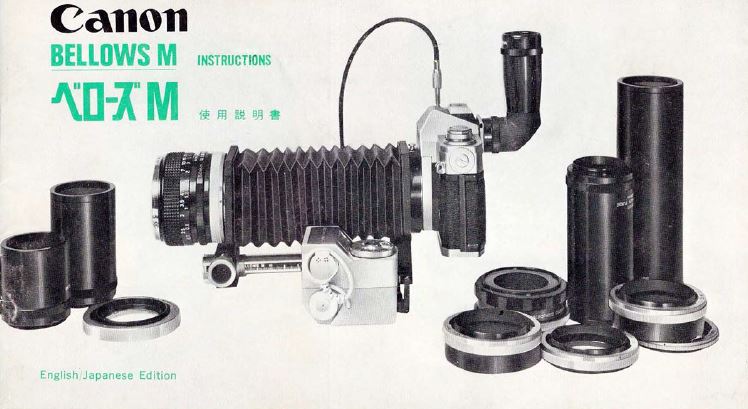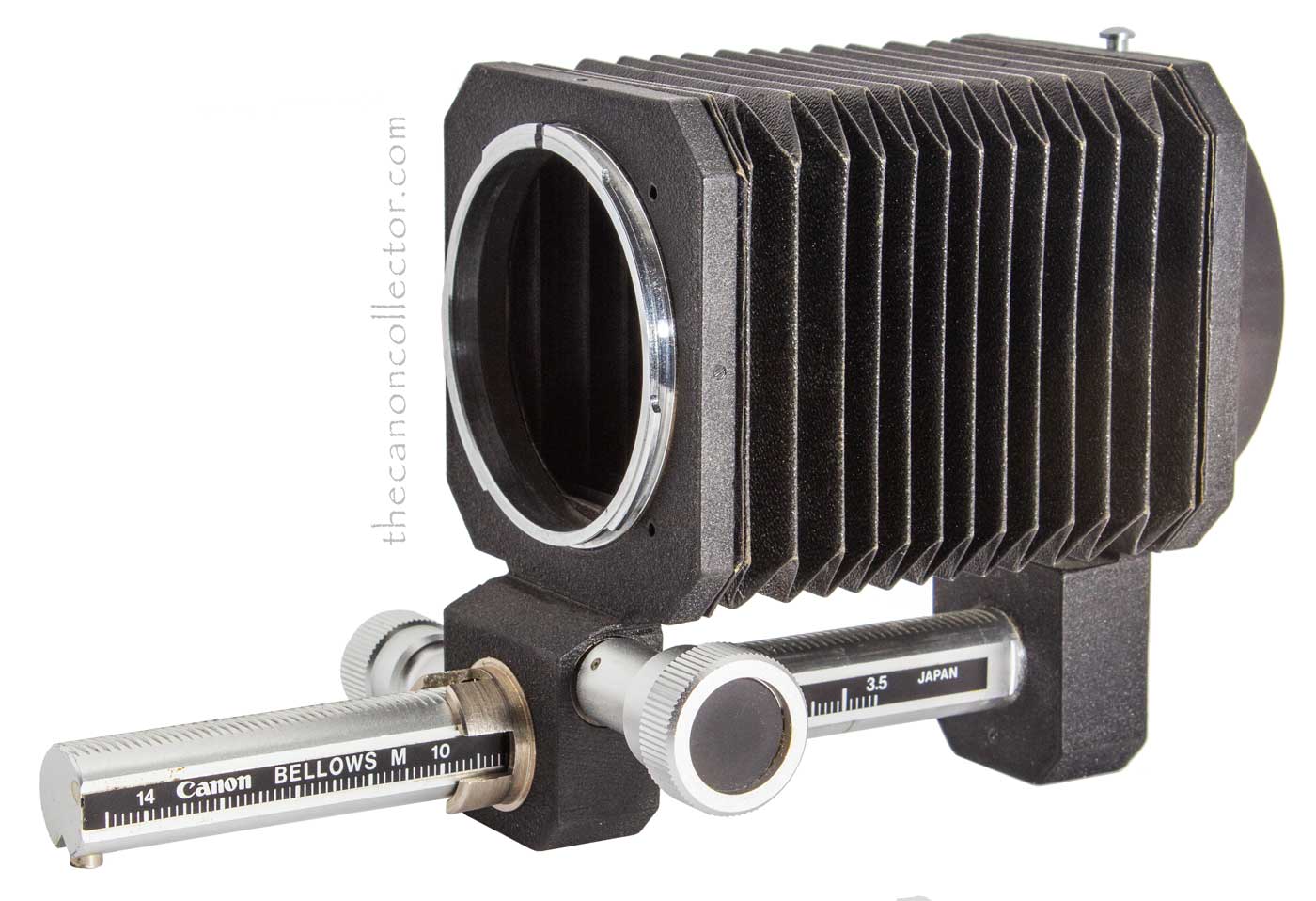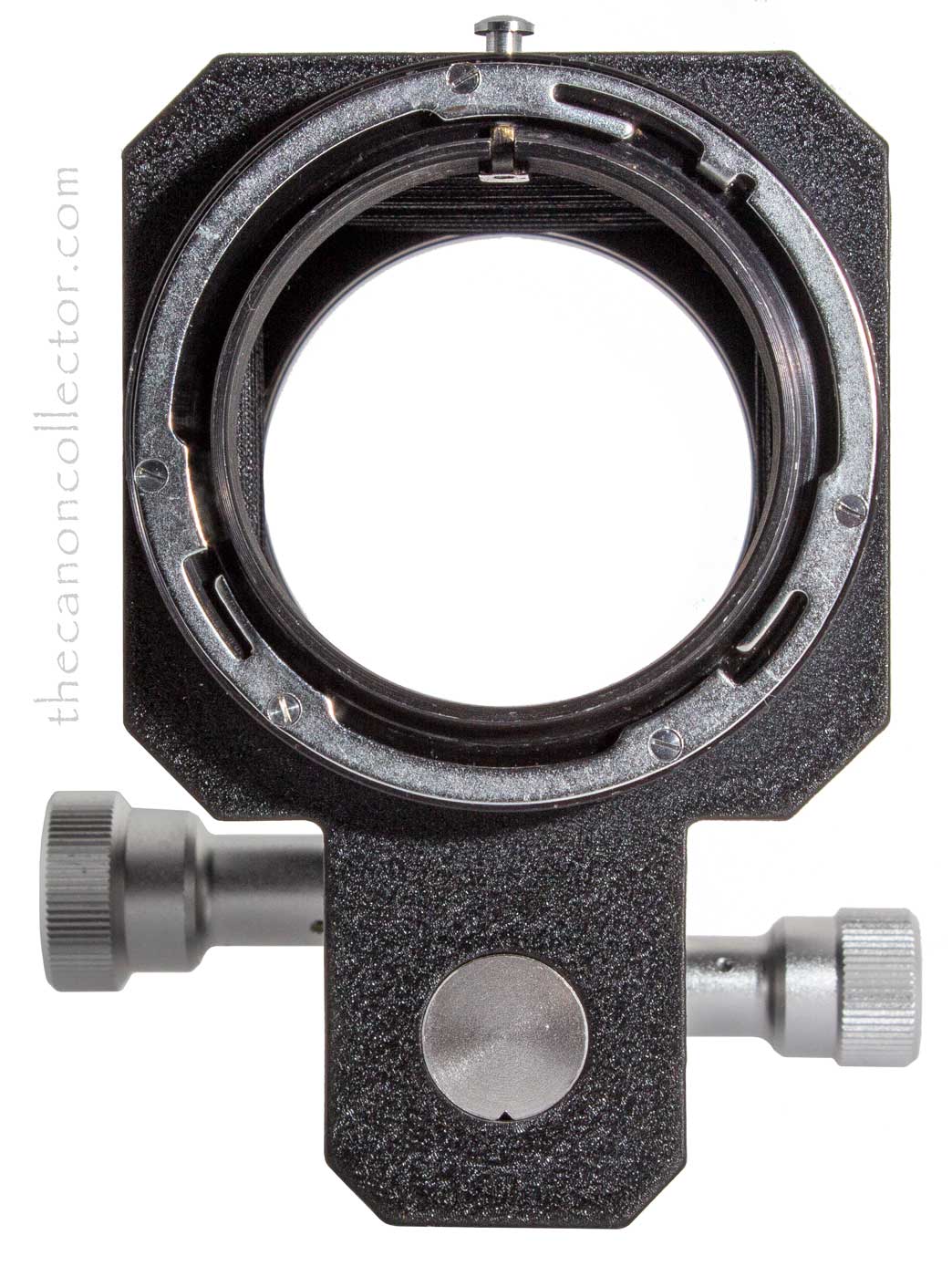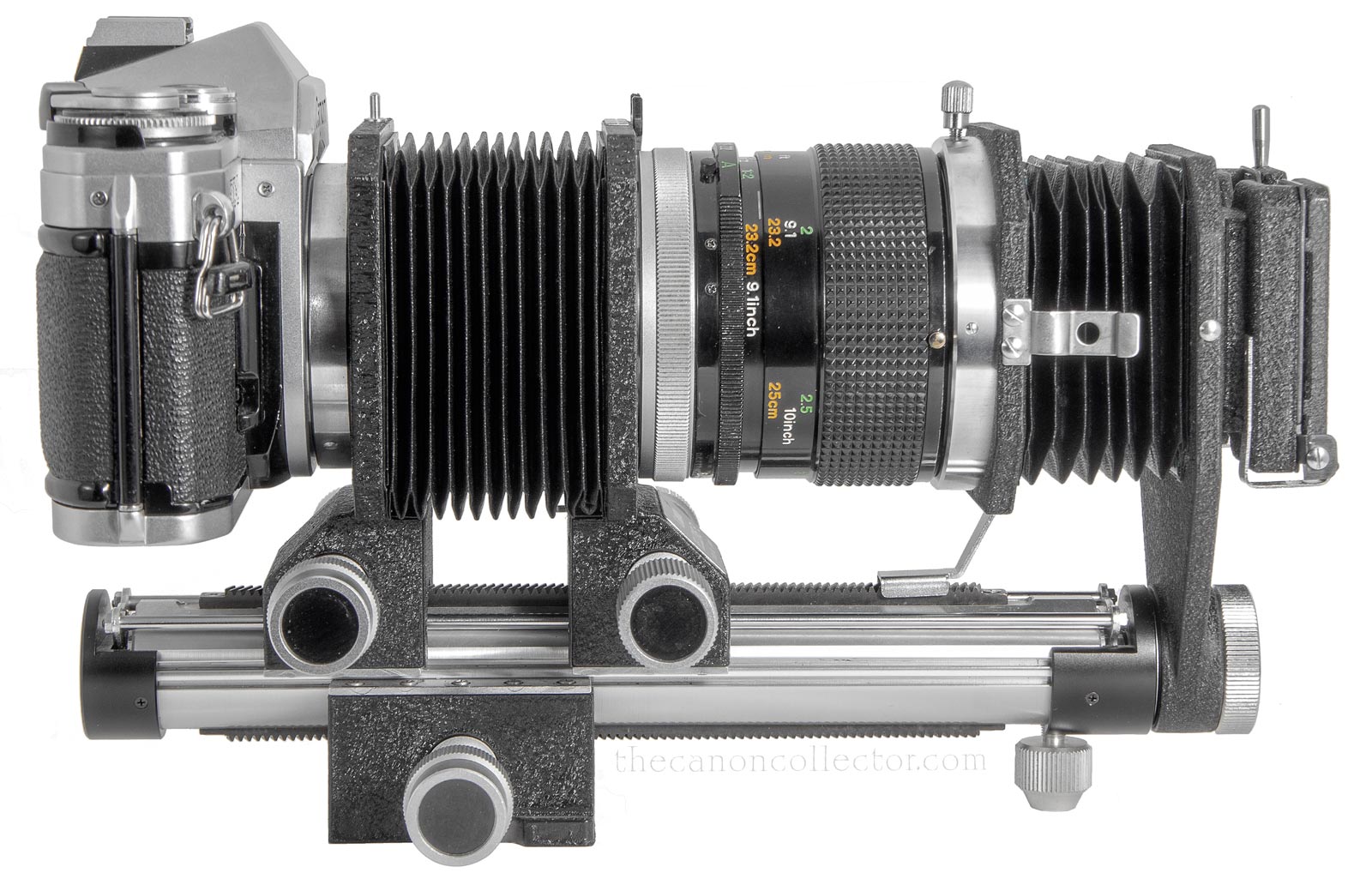
Above is a Canon AT-1 attached to a Bellows FL. In the center is a 50mm f/3.5 S.S.C. Macro lens and on the right end is a Canon Slide Duplicator. This piece of precision engineering allows the duplication of slides or negatives. With my Canon R attached it permits amazing recordings of film negatives to digital files of tremendous detail. Even today it is a wonderfully useful device.
Bellows
and Slide
Copiers
Canon introduced bellows into
their equipment lineup in the
1950’s as focusing units for very
long lenses and later as macro photography aids. But they were very much more and even today in the era of the mirrorless digital camera these fifty year old devices can serve as useful kit.
Canon’s first use of bellows units was for focusing extra long lenses. The early long lenses, 600mm and up, did not focus internally and so these lenses came with
a bellows unit. Focusing also required a Mirror Box so that accuracy of focus could be ascertained. I don’t know what the earliest Bellows Units were called other than the Bellows Focusing Device. In January of 1960 the Bellows Unit R was introduced as the first of the named Bellows Units I can find. This was the first of the bellows units intended for the new single lens reflex cameras.
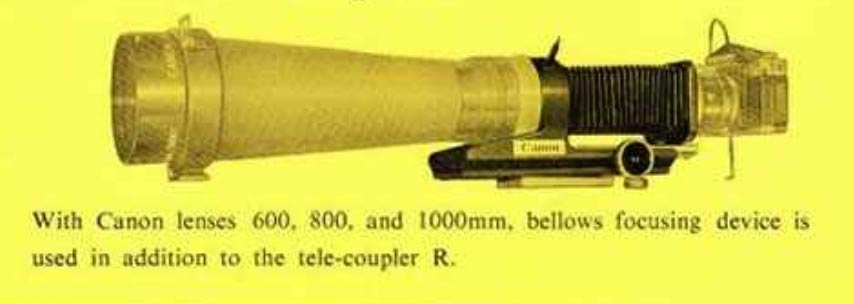
This image is cut from the Canonflex Brochure in the Library. It shows a Canonflex on a long focus lens. The Bellows Focusing Device is shown in black. I have no other name for it and can find no reference to any other designation. It is certainly longer than the Bellows R and looks more substantial.
As I said, Canon was using bellows to focus their very long lenses. When
one of these lenses was puchased it came with the bellows unit. I have
not found a name for them to this
point.
However, in January of 1960 Canon
came out with the Bellows R to serve as the focusing unit for these long lenses when used on the Canonflex. But they were intended for much more.
The image on the left is from the Canonflex RM User Instructions. It mentions as the first use for the Unit the focusing of long lenses. But then it goes no to mention copy work and macro photography. Up to the advent of the SLR camera copy work and macro photography were difficult to the point of impossible. But the through the lens view created a whole new range of possibilities.
The Bellows R is finely made. There is no “play” between any of the parts and the rack and pinion gearing is precise. If you like fine equipment this will please your heart.
I still use my Bellows R. I have an FD to R converter so that I can mount my Canon R on the bellows and I then have the use of all of my Canon FD lenses. But, more than that, I can mount almost any optical device on my digital camera.
The front of the Bellows R has a Canon R mount for the Canonflex. But, because there is no provision for aperture adjustment, all FD lenses will fit just as well.
On the rear of the Bellows R is a ring that rotates to lock the camera to the Unit. This mount is fixed to the Bellows Unit and does not move.
The bottom of the Bellows R is flat and contains a flush mounted tripod mount. The focus knob is shown here is on the top and the knob bellow is a lock to fix the position of the lens. THe tripod mount cannot move to adjust the balance of the lens and camera combination.
This is the Bellows R with the F-1 mounted on the Bellows R although the F-1 was a decade in the future.
From the side we can see that the camera end of the Bellows R is fixed to the bottom rail and does not move when the unit is focused.
This is the Auto Bellows in a its standard macro photography configuration. The lens is the 50mm f/3.5 Macro lens (an incredible lens). Scales on the main rail are used for calculating magnification and exposures.
After the Bellows FL and the Bellows R Canon introduced the
Auto Bellows. The first reference to it that I find in the Library
is in the User Manual for the New F-1 camera. This is an
amazingly versatile device for macro photography.
The Auto Bellows consists of a calibrated rail with two moving carriages connected by a bellows. One carriage is to mount the camera on and the other to mount a lens. Both can move forward and back along the rail. Under the rail is another moveable carriage which contains the tripod mount. This can be moved fore and aft to balace the unit on the tripod.
Tolerances are very tight and the unit’s components move smoothly with no play whatsoever. Once all is in position
the knobs that move the various parts can be locked
securely.
On the lens carriage is a Cable Release Socket which can
activate the FD mounts aperture lever allowing the lens to
be stopped down. The Auto Bellows ships with a double
cable release which allows the camera to focus and measure
light at full aperture and then with a single press of the cable release to stop the lens down and fire the shutter.
This is the Auto Bellows in a its standard macro photography configuration. The lens is the 50mm f/3.5 Macro lens (an incredible lens). Scales on the main rail are used for calculating magnification and exposures.
This is the Auto Bellows in a its standard macro photography configuration. The lens is the 50mm f/3.5 Macro lens (an incredible lens). Scales on the main rail are used for calculating magnification and exposures.
In this illustration the Lens Carriage has been turned around reversing the lens. The rear element is now shown towards the subject. The FD aperture linkages can be seen.
Reversing the Lens
When using high magnification values in Macro Photography it is often useful to reverse the lens for a better image. This comes about because lenses are designed to operate close to the film plane and with the subject much further away. In really close up photography this situation gets turned around with the subject being really close to the lens. The lens was not designed for this. By turning the lens around so that the subject is really close to the rear element of the lens we have a setup more closely aligned with the strengths of the lens. Or at least so I am told.
One way to reverse the lens is to use a Macrophoto Coupler but that is not necessary with the Auto Bellows. The Lens Carriage, or Front Plate as the Manual calls it, can be removed from the Rail and turned around so that the lens is reversed. In this position the double cable release still works allowing focus and metering at full aperture.
Instructions for doing this are found in the Instruction Manual above.
The Slide Duplicator 35 attaches to the front of the Auto Bellows Rail. It is shown here with the Double Cable Release attached and the Roll Film Stage being employed. It is removed by undoing the silver knob just under the open film mount.
An extremely useful attachment for the Auto Bellows, one I use to this day, is the Duplicator 35 for copying slides and 35mm film. I use it now for digitizing film and it is excellent.
There is a threaded attach point in the end of the Auto Bellows rail into which the Duplicator 35 screws. It has its own bellows which attaches to the lens so that the lens comes between the two bellows allowing it to adjust focus and image size. there are guides for the slide or film strip and a milky white diffusion glas to even out the illumination passing through the film or slide.
If one is scanning an uncut roll of film it is awkward having two or three feet of film hanging out of the unit and attracting dust to itself. To manage the film is the Canon Roll Film Stage which attaches to the Duplicator 35 allowing the film to spool from one side to the other as the frames are captured. This is not necessary when scanning short film strips.
The Duplicator 35 has its own bellows which clamps to the front of the lens with the set screw on the right.
The Auto Bellows set up with the Duplicator 35 to duplicate lides or 35mm film. The double cable release is attached allowing metering and focus at full aperture.
The Canon Bellows M may be Canon’s simplest bellows unit being no
more that a moveable lens holder on a calibrated rail.
In 1971, when Canon introduced the Auto Bellows, they also introduced what may be the simplest bellows unit they made:
the Bellows M. It consists of a solid plate, the Camera Attachement Section, with a focusing rail set into it. On the rail
is a moveable lens mount to which the lens attaches.
Sometimes one wants a simple device for taking close-up
photos that is small, lite and easy to transport. That is not
the Auto Bellows: that is the Bellows M.
Like all of Canon’s products, this is a sturdy well made, all be it simple and lite weight, bellows unit. The camera stage is
not reversible and the tripod mount is small and not
terribly stable due to its small footprint.
Being so simple it is completely intuitive to use and any
questions are quickly answered in the User Manual.
This website is the work of R. Flynn Marr who is solely responsible for its contents which are subject to his claim of copyright. User Manuals, Brochures and Advertising Materials of Canon and other manufacturers available on this site are subject to the copyright claims and are the property of Canon and other manufacturers and they are offered here for personal use only.

